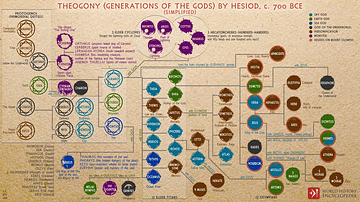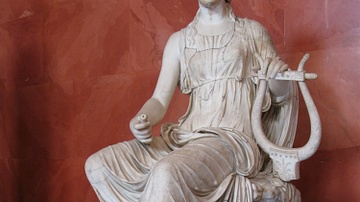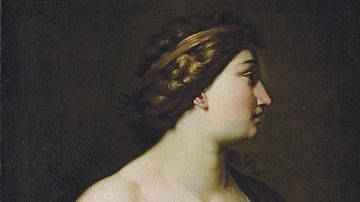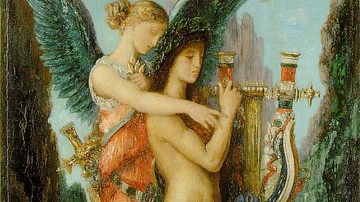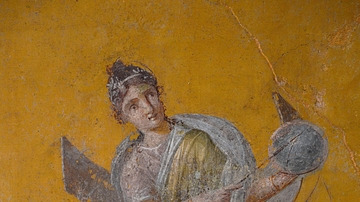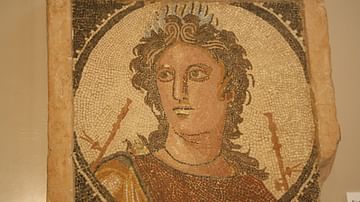Illustration
An infographic depicting the nine Muses of Greek mythology. The Muses are a group of divine sisters who govern various aspects of creativity and intellectual pursuits. Originally, the ancient Greeks recognized three Muses: Melete, Mneme, and Aoide, overseeing meditation, memory, and song, respectively. However, over time, the Muses expanded into a group of nine, each with her distinct domain. Calliope presides over epic poetry and eloquence, Clio over history, Euterpe over music and lyric poetry, Thalia over comedy, and Melpomene over tragedy. Terpsichore leads in dance and choral song, Erato in love poetry, Polyhymnia in sacred poetry, hymns, and eloquence, while Urania's influence extends to astronomy and celestial navigation. The codification of the nine Muses took place during the early centuries of the first millennium BCE. Hesiod, a Greek poet who lived around the 8th century BCE, is often credited with formalizing the concept of the nine Muses in his epic poem "Theogony." In this work, Hesiod introduced the names and domains of each Muse, solidifying their roles in inspiring various forms of art, literature, and intellectual pursuits.
About the Author
Cite This Work
APA Style
Netchev, S. (2023, December 19). The Nine Muses of Greek Mythology. World History Encyclopedia. Retrieved from https://www.worldhistory.org/image/18283/the-nine-muses-of-greek-mythology/
Chicago Style
Netchev, Simeon. "The Nine Muses of Greek Mythology." World History Encyclopedia. Last modified December 19, 2023. https://www.worldhistory.org/image/18283/the-nine-muses-of-greek-mythology/.
MLA Style
Netchev, Simeon. "The Nine Muses of Greek Mythology." World History Encyclopedia. World History Encyclopedia, 19 Dec 2023. Web. 20 Feb 2025.



